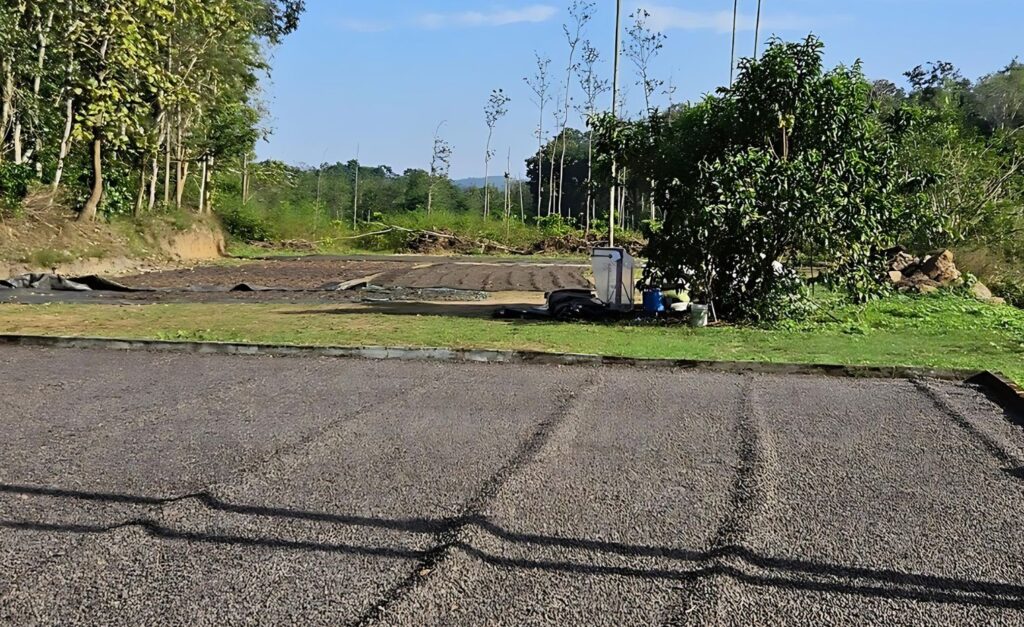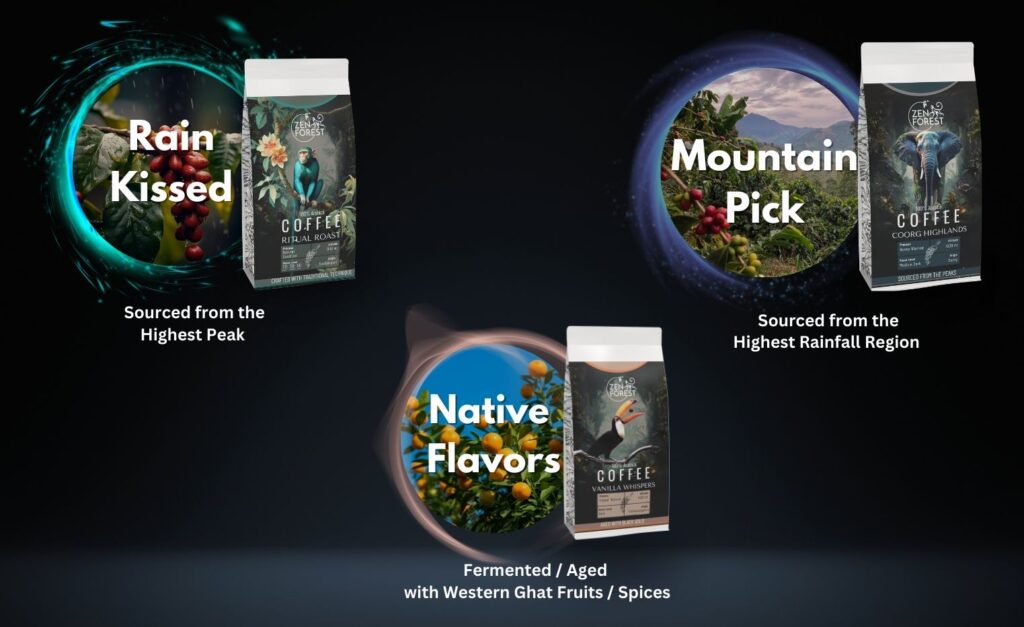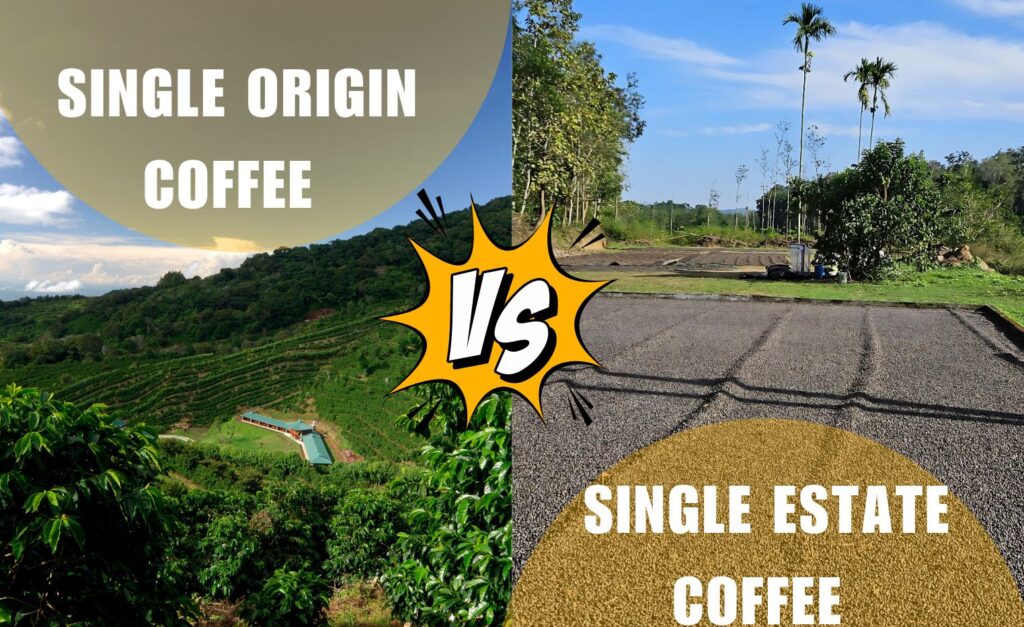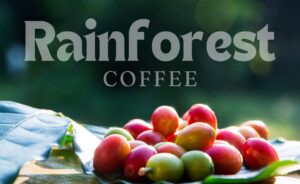With the rise of specialty coffee in India, terms like “single origin” and “single-estate” are becoming more common. However, there’s often confusion between these terms. Is single origin synonymous with single estate? The short answer: not necessarily. Single origin coffee is all about geography—focusing on where the coffee beans are grown, but it doesn’t always refer to a single estate. This article will explore the nuances between these two terms, clarify misconceptions, and showcase how Zenforest Coffee approaches the idea of single origin.
The Rise of Specialty Coffee in India
Over the past decade, the Indian coffee market has seen a remarkable shift toward specialty coffee. More and more consumers are becoming coffee connoisseurs, interested in the story behind each cup they drink. Specialty coffee, which emphasizes quality, flavor, and sustainability, has driven this trend, with an increasing focus on single origin beans. Specialty coffee pioneers like Kaldevpura, Baarbara Estate, and Attikan Estate have built a reputation for providing high-quality, unique coffees.
But even as single origin coffee gains traction, there’s still confusion about what it means. Many people assume that single origin refers to a single farm or estate, but the truth is far more nuanced.
What Does Single Origin Coffee Really Mean?
In the world of coffee, “single origin” can refer to a variety of geographic scales. While it may include a single estate, it often refers to beans sourced from a broader region. The primary focus of single origin coffee is on the environmental factors—such as altitude, soil, climate, and cultivation practices—that shape the bean’s unique flavor profile. The term highlights the connection between the bean and its origin, rather than a specific estate.
Global Examples of Single Origin Coffee
Globally, single origin coffee is defined in different ways depending on where it’s sourced. Here are some examples:
- Country-Based Single Origin: Ethiopian Yirgacheffe coffee, known for its fruity and floral notes, is classified as single origin by country, and sometimes by the Yirgacheffe region within Ethiopia.
- Region-Based Single Origin: Colombian Huila coffee is another excellent example, offering bright acidity and caramel sweetness. Sourced from the Huila region, it highlights the influence of its specific geographic area.
- Farm-Based Single Origin: In Kenya, many coffees are labeled by farm or cooperative. Coffee from specific farms in the Nyeri region, for example, is prized for its berry-like acidity and depth.
These examples show that single origin doesn’t have to be tied to one estate. Instead, it’s about the unique characteristics imparted by a specific growing region. In essence, the “origin” could be a country, a region, or an estate, with each level of specificity providing its own set of traits.
Single Origin vs. Single Estate Coffee in India
In India, we often see the terms “single estate” and “single origin” used interchangeably, but they’re not the same. Single-estate coffee refers specifically to beans grown on one farm. This might be a large, well-known estate, such as Kaldevpura, Baarbara Estate, or Attikan Estate in Chikkamagaluru. These estates are recognized for their meticulous cultivation practices and unique flavor profiles, shaped by microenvironmental factors and agronomic practices.
While single estate coffee provides a unique, focused experience, it’s not the only path to great coffee. Many exceptional coffees come from smaller farms, cooperatives, or regions that don’t have a branded estate name but still produce beans of extraordinary quality.

Why Single Estate Isn’t the Only Path to Great Coffee
Though all Single Estate coffee are Single Origin coffee, the idea that high-quality coffee must come from large estates is a misconception. In regions like Coorg, Chikkamagaluru, and Sakleshpur, less than 5% of coffee growers own more than 500 acres of land. The majority of coffee producers—over 90%—are small to medium-scale farmers, with less than 10 acres of land. Despite their smaller size, these farms produce exceptional coffee that is often overlooked due to the lack of a recognizable estate name.
Small-scale farmers are cultivating coffee in harmony with nature, employing sustainable practices that result in beans with distinct flavors. For example, coffee grown in Coorg under the shade of native trees develops a unique flavor profile compared to coffee grown in open fields in other parts of the world. In this case, it’s the environment—not the estate—that plays the dominant role in shaping the coffee’s character.
Environmental Factors that Shape Coffee
When we talk about single origin coffee, we’re not just referring to the farm it comes from. The term encompasses the environmental factors that influence the beans. Altitude, rainfall, temperature, soil composition, and even the flora and fauna surrounding the coffee plants can significantly affect the flavor profile of the coffee.
- Altitude: High-altitude coffee tends to be more acidic and flavorful, as the cooler temperatures slow down the coffee bean’s maturation, allowing for more complex sugars to develop.
- Soil: The minerals in the soil, such as volcanic ash, can impart specific flavor characteristics to coffee beans.
- Climate: Rainfall and temperature variations affect how the coffee beans ripen, which can influence their sweetness and body.
In places like Ethiopia or Colombia, single origin coffee is often defined by these environmental factors. Likewise, in India, the Western Ghats provide a unique environment for coffee cultivation, from the highest peaks to the rain-soaked valleys.
Single Origin Coffee at Zenforest Coffee
At Zenforest Coffee, we’ve taken the concept of single origin coffee a step further by focusing on the environmental conditions that shape our beans. Our single origin coffees are categorized not just by location but by the unique environmental characteristics of the region, offering an immersive experience that captures the essence of the Western Ghats.
Rain Kissed
Our Rain Kissed coffee is sourced from regions in the Western Ghats that receive the highest rainfall, particularly in Malenadu. These beans are nurtured by heavy monsoon rains, giving them vibrant, lush notes that reflect the rich, moisture-laden environment.
- Flavor Profile: Bright, juicy acidity with notes of tropical fruit and a lingering sweetness.
Mountain Peak
Mountain Peak coffee is grown at the highest elevations of the Western Ghats. The cooler temperatures at these altitudes slow down the maturation of the beans, resulting in a bold, complex flavor profile that’s unmatched.
- Flavor Profile: Deep, bold body with notes of dark chocolate, berries, and a smooth finish.
Monsoon Aged
Our Monsoon Aged coffee is a truly unique offering. Premium Arabica beans are aged in wooden barrels for 4-6 months during the monsoon season. The moisture in the air interacts with the beans, creating a flavor profile that’s earthy and spicy, with a complexity that’s hard to find elsewhere.
- Flavor Profile: Rich, earthy body with hints of spice, molasses, and dark fruit.
Hidden Gem
The Hidden Gem category showcases coffee from special, often overlooked regions. These beans come from unique environments, such as plantations surrounded by oak trees or unexplored areas in the Western Ghats. This category also includes rare coffees like Civet Coffee, offering truly distinctive flavors.
- Flavor Profile: Complex, with notes of nuts, ripe fruit, and a slight sweetness, accompanied by unique earthy undertones.

Single Origin vs. Single Estate: A Matter of Perspective
Some coffee enthusiasts are drawn to single-estate coffees because they offer a specific snapshot of a farm’s microenvironment and management practices. Estates like Kaldevpura, Baarbara Estate, and Attikan Estate have built reputations for producing high-quality coffee with unique flavors. Their coffee reflects not only the geography but also the care and expertise of the estate’s owners.
However, focusing exclusively on single-estate coffee can limit your experience. As we’ve mentioned, the environment plays a crucial role in shaping coffee’s character, sometimes even more than the estate itself. By exploring single origin coffees from broader regions—like Coorg or Chikkamagaluru—you’ll discover an array of flavors influenced by altitude, shade-grown conditions, and other environmental factors.
In fact, Indian coffee can be considered single origin for consumers abroad. Even within India, regions like Coorg can be grouped into further classifications based on environmental factors, such as rainfall or altitude, which affect the coffee’s flavor profile.
The Zenforest Approach to Single Origin Coffee
At Zenforest Coffee, we believe that the true essence of single origin coffee lies in the environment it’s grown in, not just the estate. We aim to break the perception that single origin must come from a single estate. By grouping our coffees based on their regional traits—such as the highest rainfall regions, the highest peaks, or shade-grown areas—we offer our customers the opportunity to experience some of the finest coffee cultivated by small farmers across the Western Ghats.
By exploring coffee through these environmental lenses, we give you access to exceptional beans that might otherwise go unnoticed. Each region brings its own set of flavors, and by highlighting these differences, we invite you to experience the rich diversity of Indian coffee.
Visit https://zenforestcoffee.com/rainforest-collection/ For more insights into our unique coffee offerings, visit our Rainforest Collection or follow us on Instagram. We invite you to experience the flavors shaped by nature’s finest touch. #zenforest Coffee #Single Origin Coffee #rainforest coffee collection.
Send your feedbacks / Comments / Questions at info@zenforestcoffee.com with the link of the article you are referring to and you complete details.









